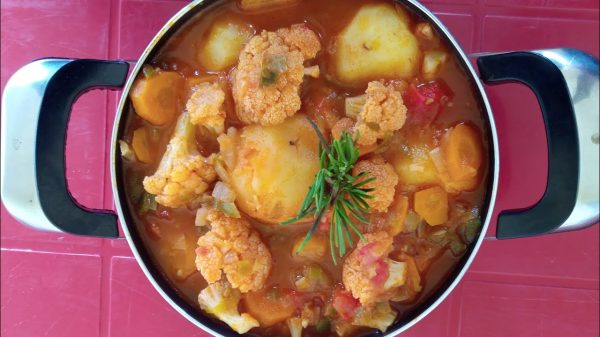Sudanese cuisine, a delightful fusion of African, Arab, and Mediterranean influences, offers a unique and flavorful experience for adventurous palates.
Rooted in staple ingredients like sorghum, millet, and beans, Sudanese dishes are often hearty, aromatic, and generously spiced.
From slow-cooked stews brimming with tender meats and vegetables to flavorful breads and refreshing beverages, the culinary landscape of Sudan reflects its rich cultural heritage and the warmth of its people. Embark on a gastronomic journey and discover the tantalizing flavors of Sudan with these seven must-try dishes that promise a truly authentic taste of the region.
1. Ful Medames
Ful Medames is a beloved Sudanese staple, often enjoyed for breakfast. It consists of fava beans that are slow-cooked until tender, then seasoned with garlic, cumin, and lemon juice. Typically garnished with chopped tomatoes, onions, and a drizzle of olive oil, it’s served alongside warm bread. This hearty dish provides a nutritious start to the day and reflects the simplicity and flavor of Sudanese cuisine.
2. Kisra
Kisra is a traditional fermented flatbread made from sorghum flour. Its thin, crepe-like texture and slightly sour taste make it a perfect accompaniment to various stews and sauces. Commonly served with dishes like mulukhiyah or bamia, Kisra is a staple in Sudanese households and showcases the importance of grains in the local diet.
3. Mulukhiyah
Mulukhiyah is a green stew made from jute leaves, known for its unique, slightly viscous texture. Cooked with garlic, coriander, and often meat such as chicken or lamb, it’s typically served over rice or with bread. This nutritious dish is cherished for its rich flavor and health benefits, making it a comforting meal in Sudanese cuisine.
4. Shaiyah
Shaiyah is a flavorful meat dish featuring lamb or beef that’s pan-fried with onions, garlic, and a blend of spices like cumin and coriander. Often served with bread or rice, it’s a popular choice for gatherings and special occasions. The dish’s simplicity allows the quality of the meat and the depth of the spices to shine.
5. Bamia
Bamia is a savory okra stew cooked with tomatoes, onions, and garlic, seasoned with spices such as cumin and coriander. Often including chunks of meat, it’s served over rice or with bread. The dish is appreciated for its hearty texture and the way the okra thickens the stew naturally.
6. Kajaik
Kajaik is a traditional fish stew originating from regions along the Nile. Made with freshwater fish that’s cooked with onions, tomatoes, and spices, it’s often thickened with millet flour. This dish highlights the importance of the Nile’s resources in Sudanese cooking and offers a taste that’s both rustic and deeply satisfying.
7. Basbousa
Basbousa is a sweet semolina cake soaked in sugar syrup, flavored with rose or orange blossom water. Often garnished with almonds or coconut, it’s a popular dessert served during celebrations and with tea. Its moist texture and sweet flavor make it a delightful end to any meal.
The seven dishes highlighted offer a delightful introduction to the diverse and flavorful culinary landscape of Sudan. From the hearty stews like Mullah and Gurasa to the comforting Asseeda and the refreshing Salata Baladi, each dish tells a story of Sudan’s rich cultural heritage and agricultural bounty. Exploring these tastes provides a deeper understanding of the Sudanese way of life and the warmth of its people.
Beyond these seven, Sudan’s cuisine boasts a wealth of other exciting flavors waiting to be discovered. Be adventurous, seek out local eateries, and don’t hesitate to ask about regional specialties. Whether you’re a seasoned traveler or a curious foodie, the experience of savoring authentic Sudanese dishes will undoubtedly enrich your journey and leave a lasting impression of this fascinating East African nation. So, the next time you find yourself in Sudan, embark on this delicious adventure and let your taste buds guide you through its vibrant culinary traditions. You’re in for a truly memorable and flavorful experience.
Subscribe to our Newsletter
Stay updated with the latest trends in African Pop Culture!



















